Abstract
Phleomycin induces DNA breakage in vitro in the presence of the sulphydryl compound dithiothreitol. The reaction appears to be free radical-mediated, and requires oxygen and metal ions. Reaction rate is limited by the concentration of oxygen, which is converted to hydrogen peroxide during DNA breakage. However there is no net change in the sulphydryl compound. The proposed reaction mechanism involves metal ion/oxygen-catalysed oxidation of dithiothreitol to its free radical form, which reacts with phleomycin, leading to formation of activated phleomycin and regeneration of free sulphydryl. Free phleomycin is converted to an inactive form, but activation of phleomycin bound to DNA leads to DNA breakage.
Full text
PDF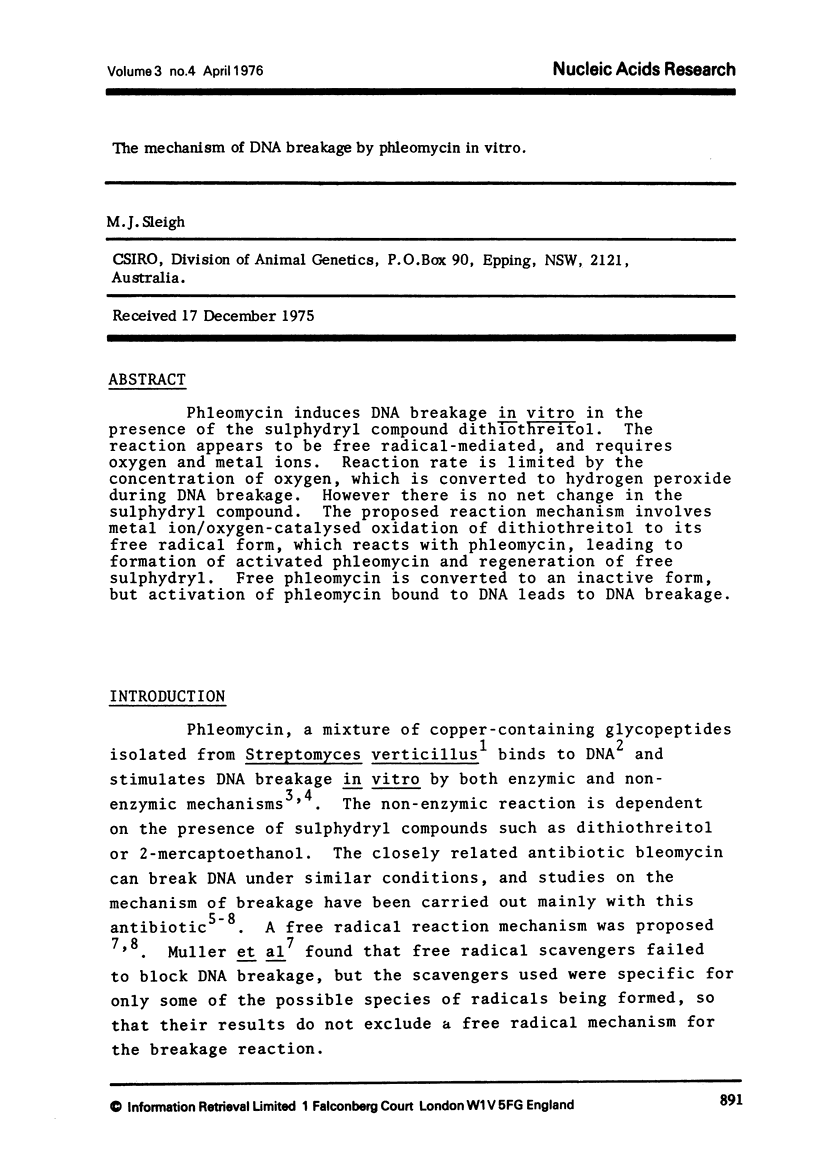
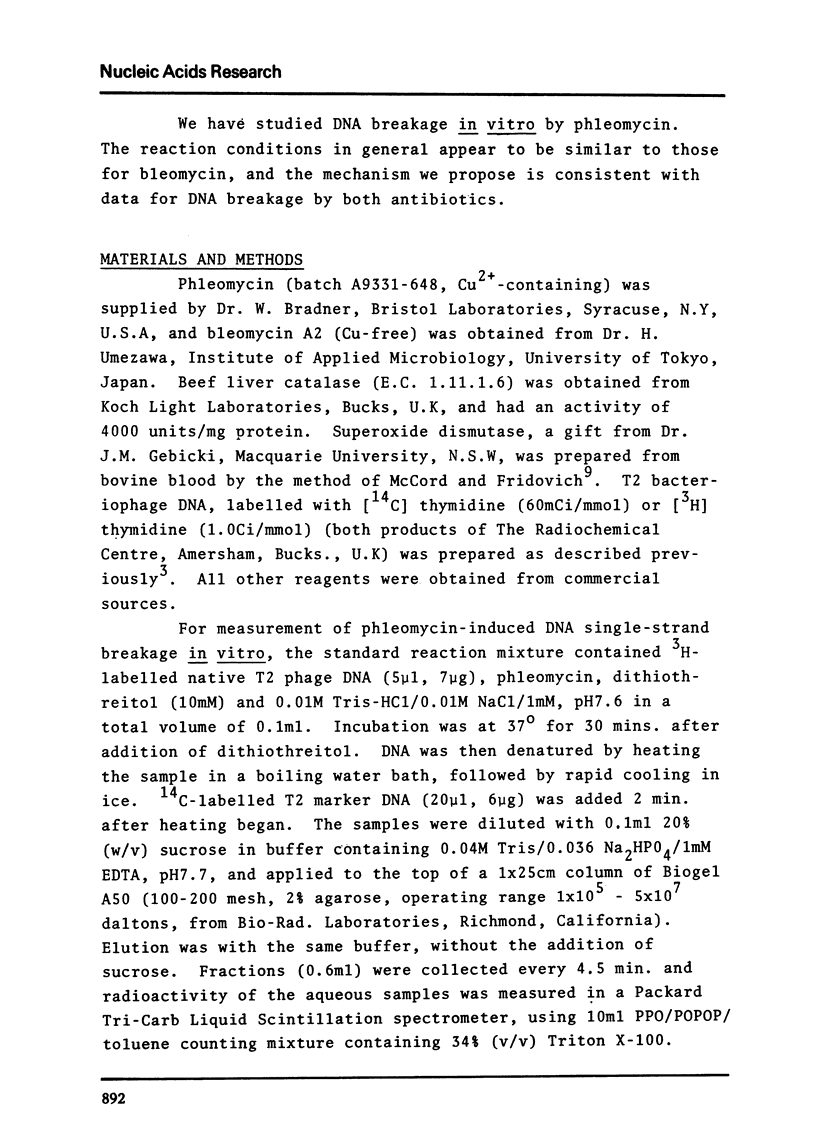
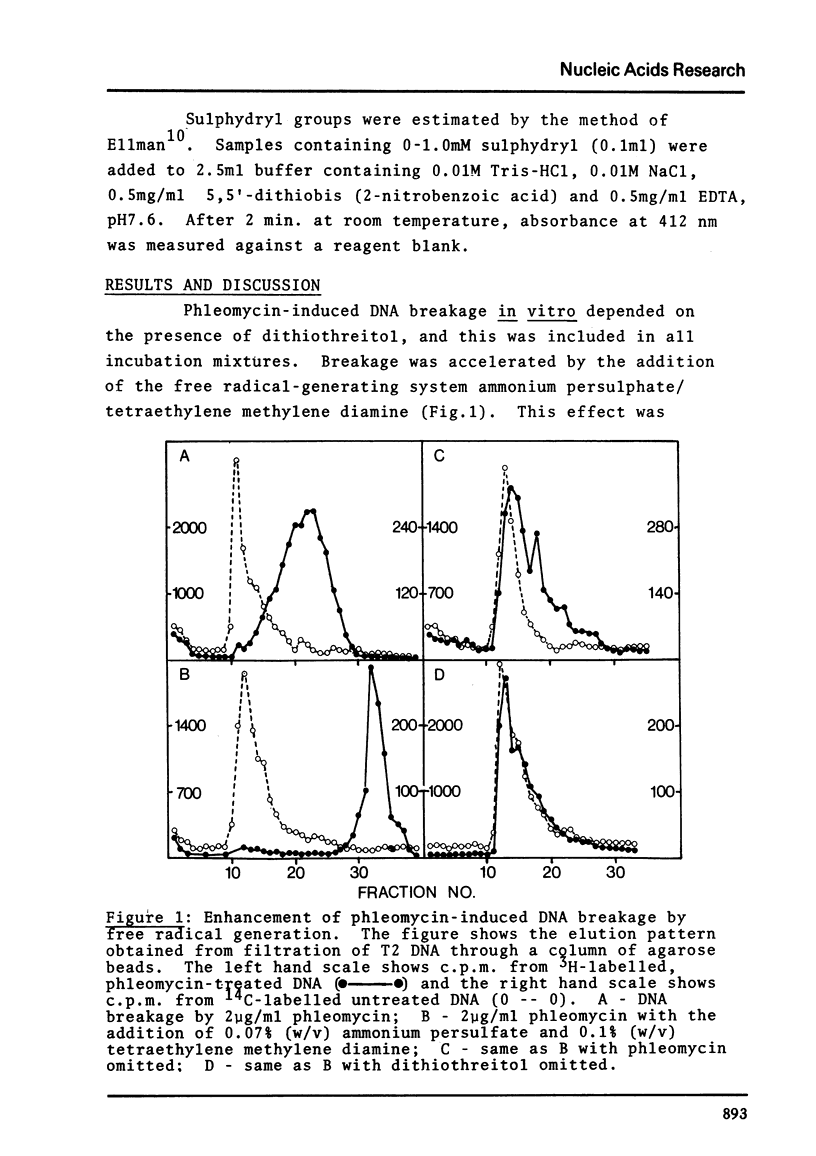
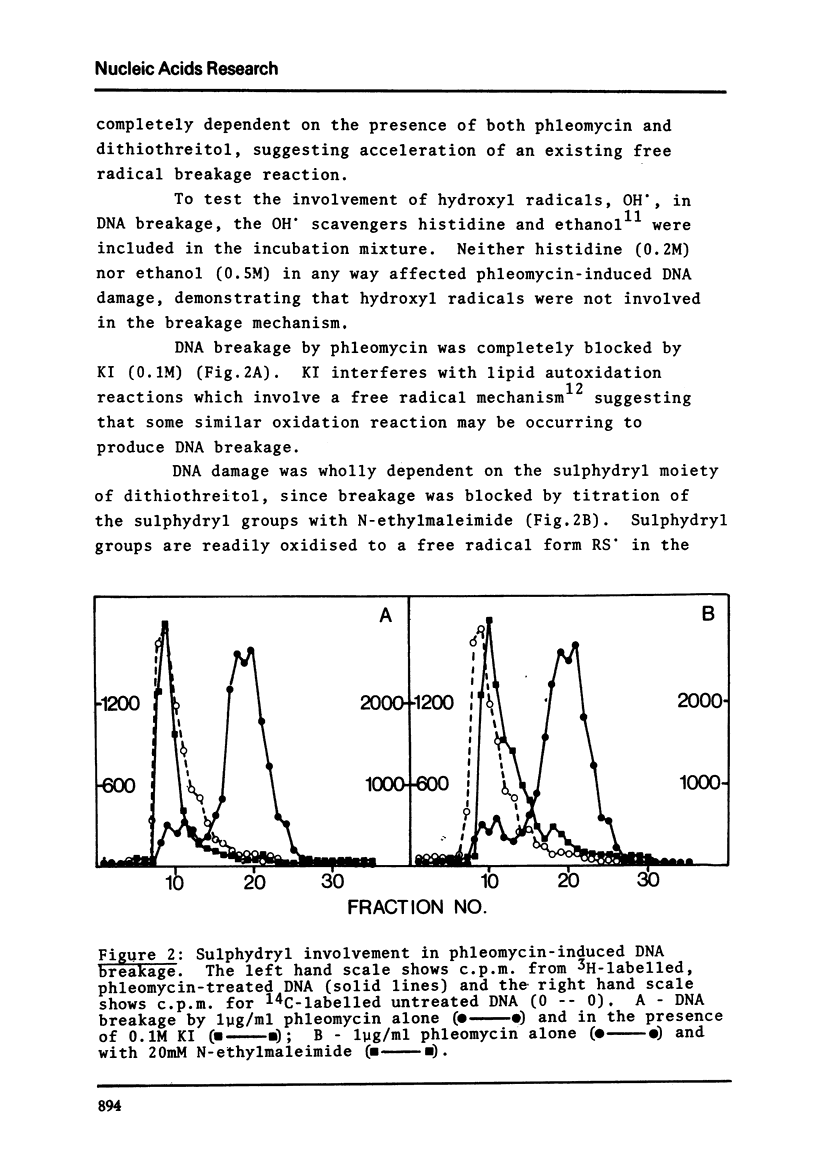
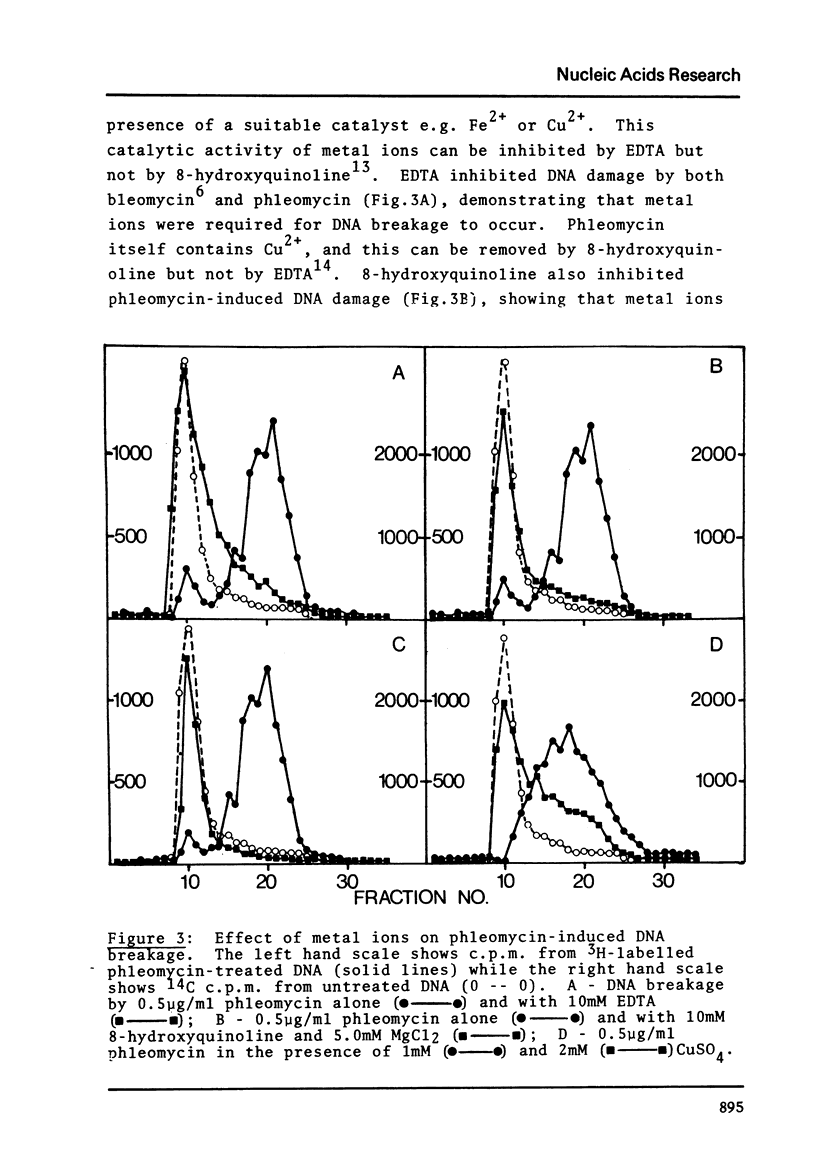
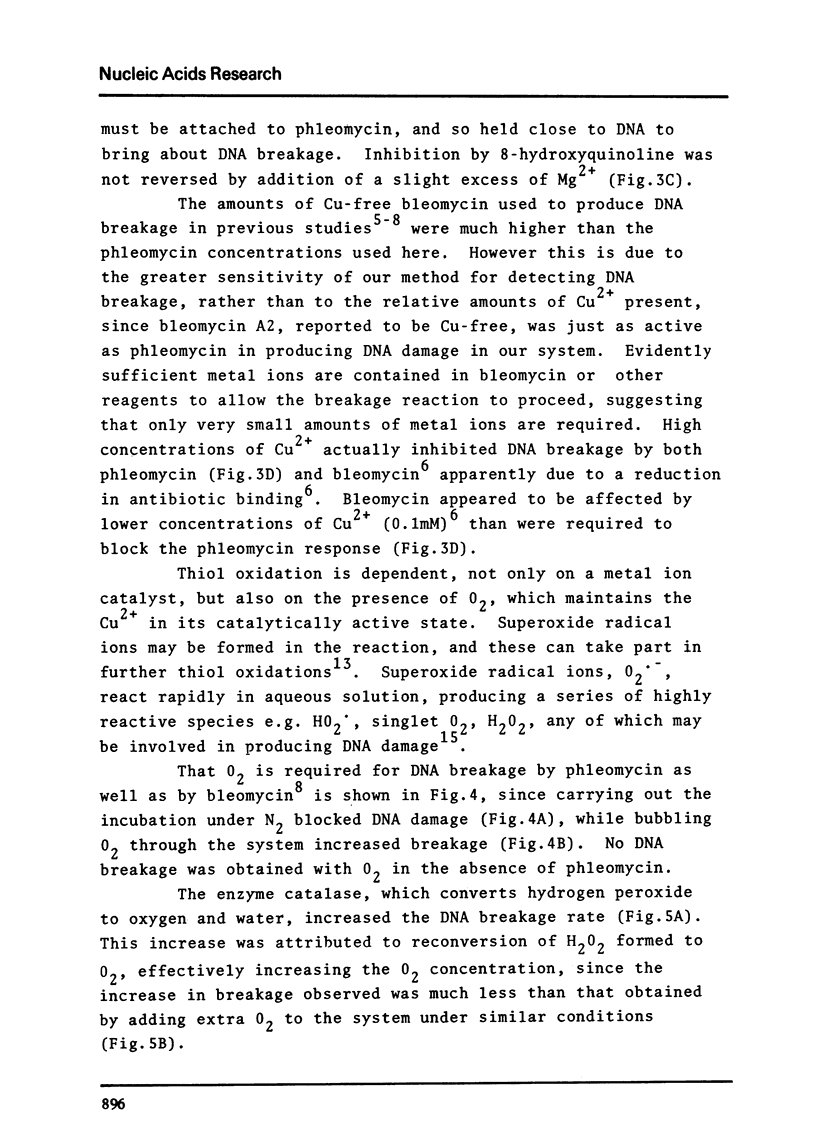
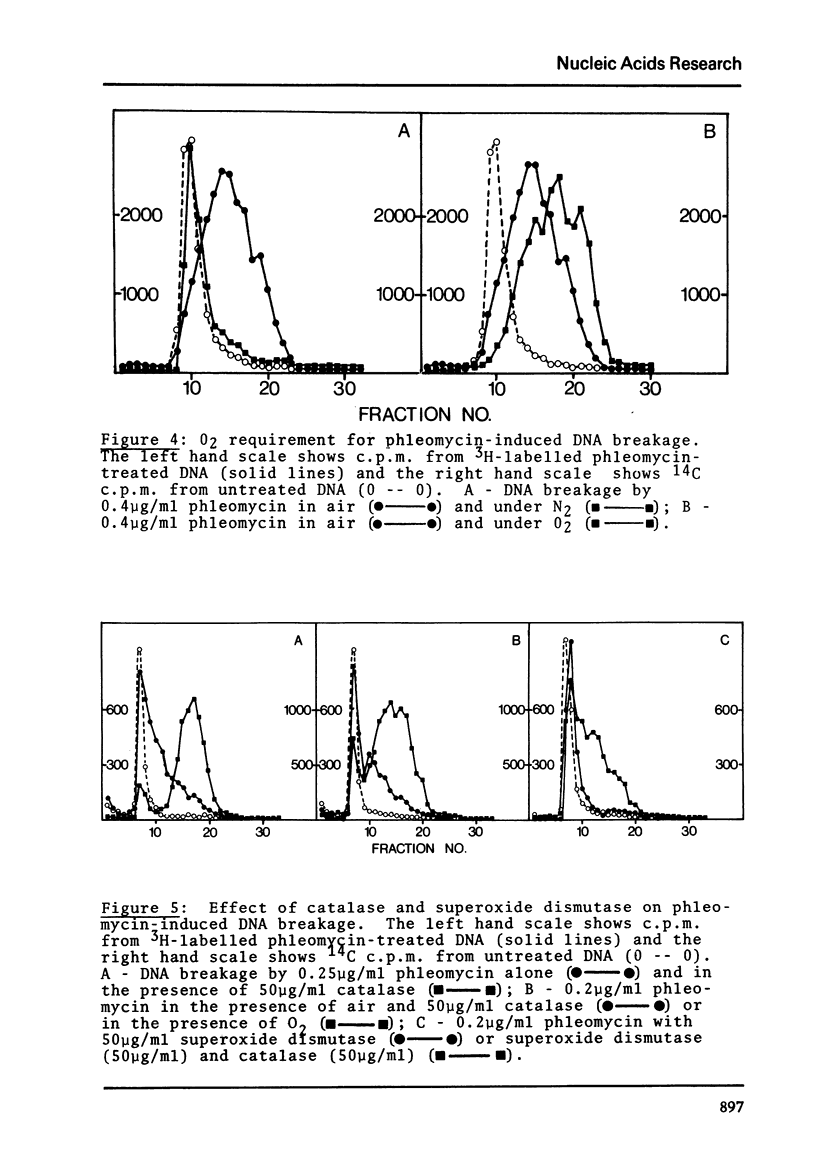
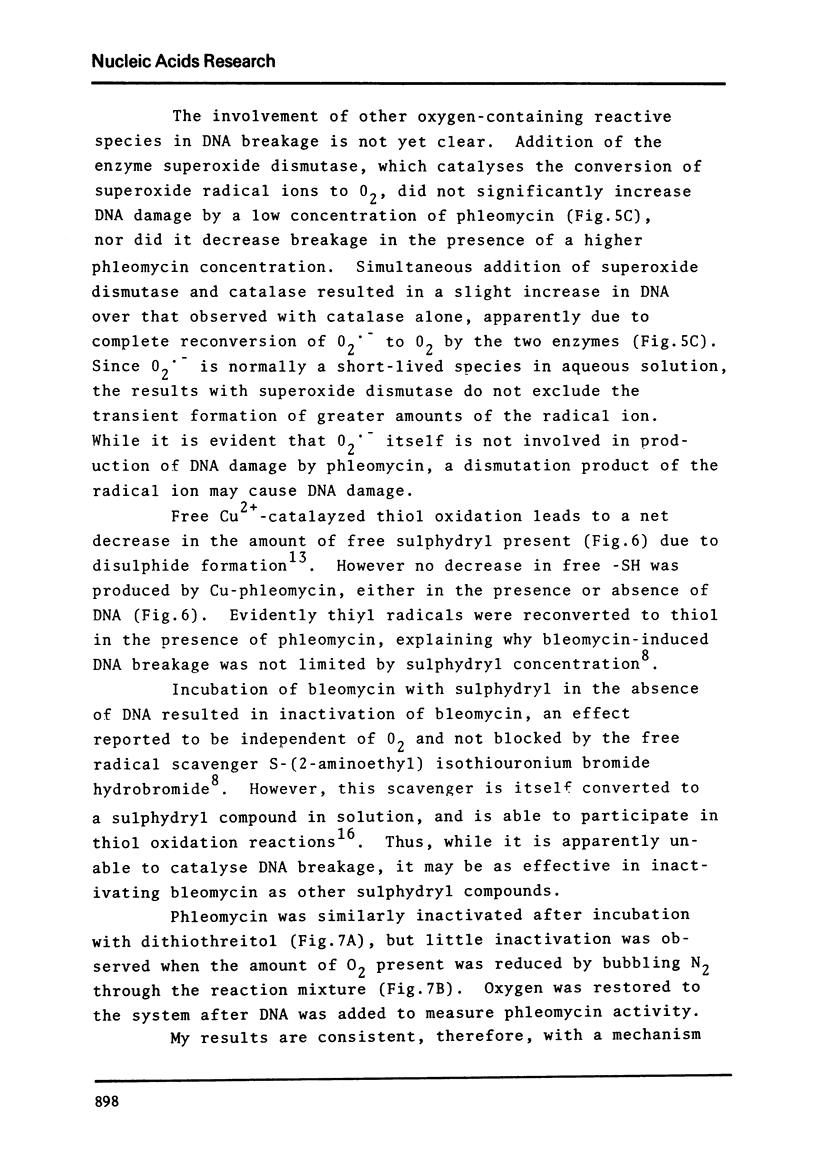
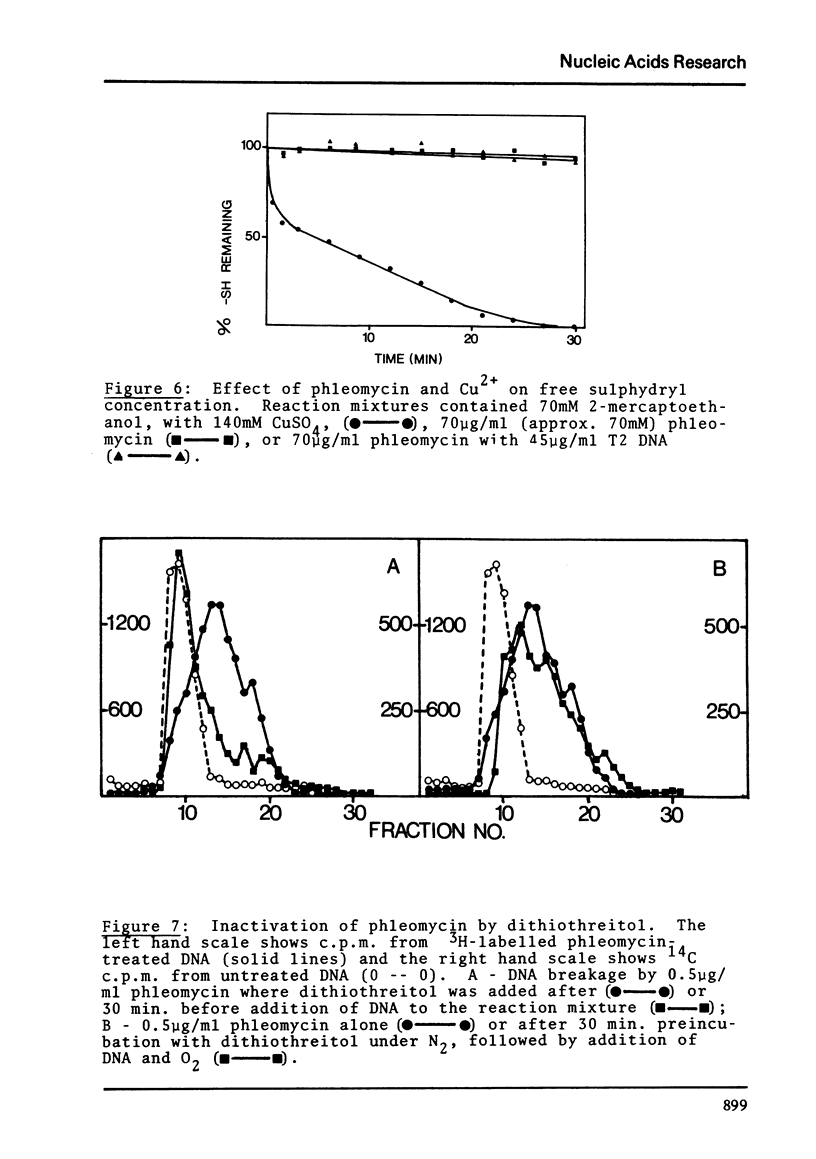
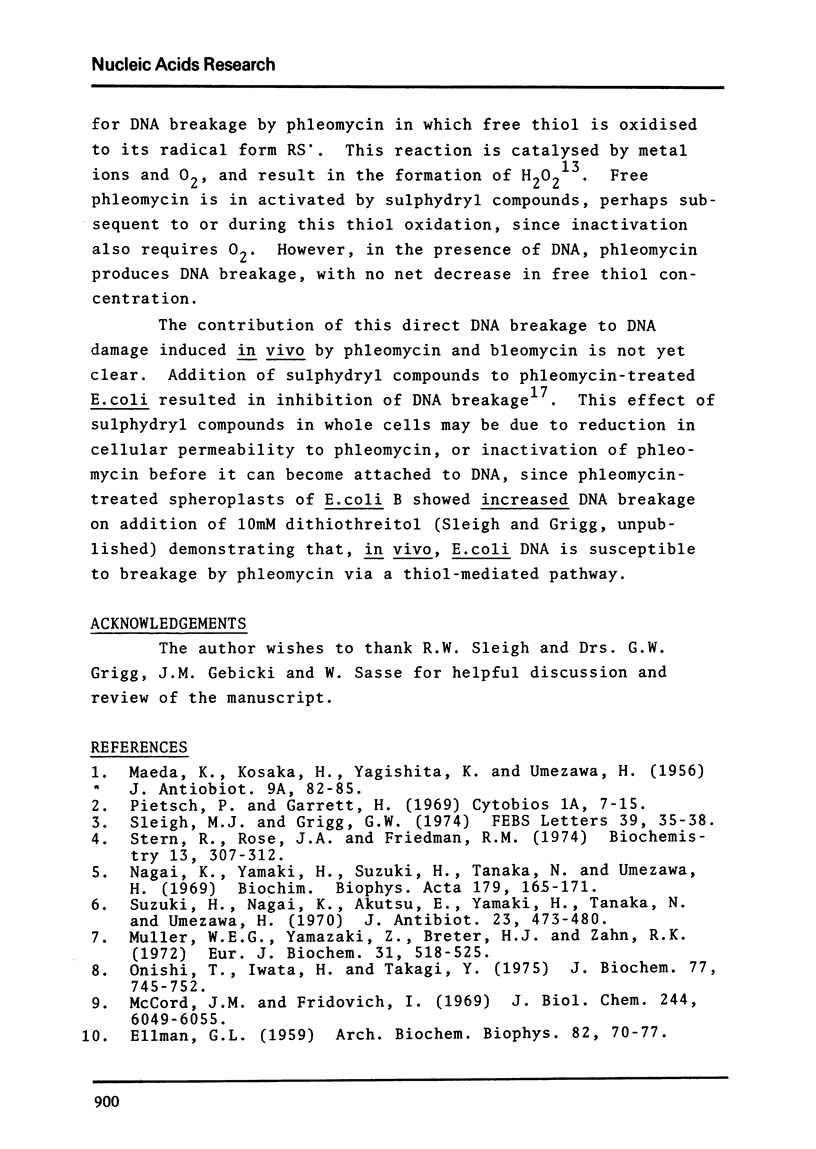
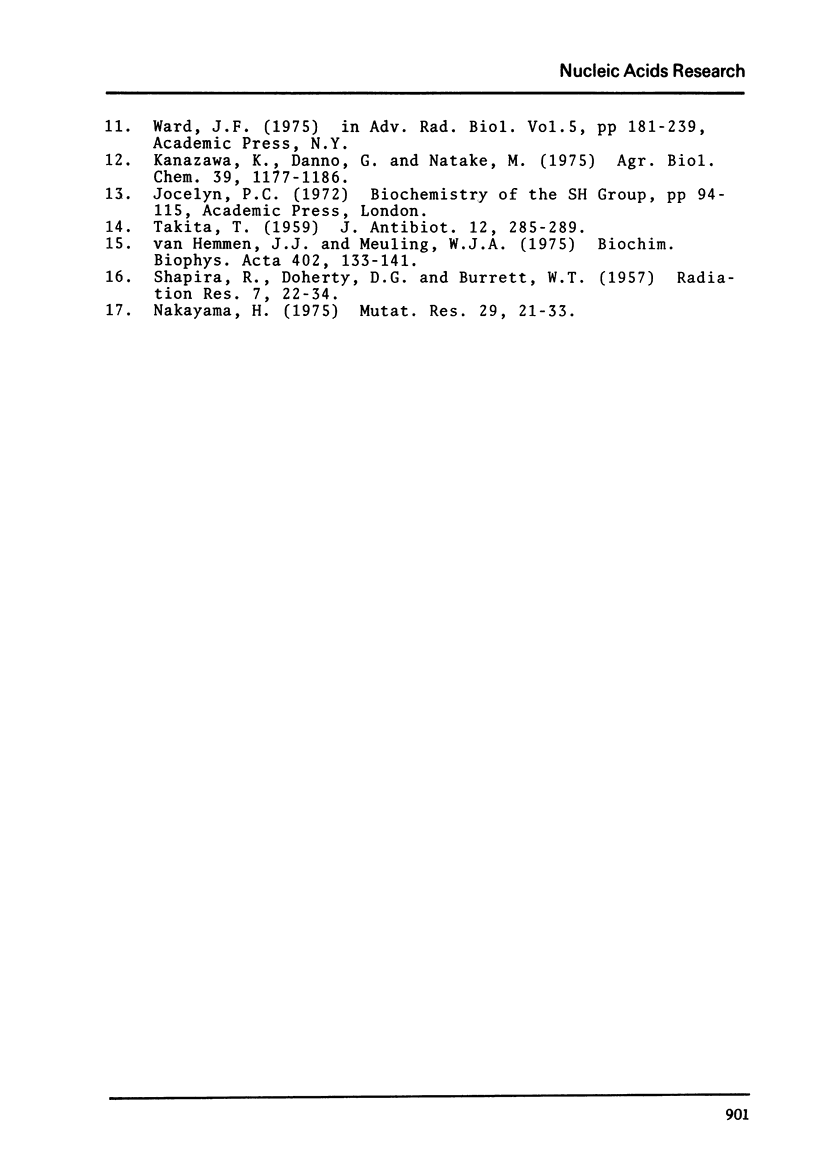
Selected References
These references are in PubMed. This may not be the complete list of references from this article.
- ELLMAN G. L. Tissue sulfhydryl groups. Arch Biochem Biophys. 1959 May;82(1):70–77. doi: 10.1016/0003-9861(59)90090-6. [DOI] [PubMed] [Google Scholar]
- MAEDA K., KOSAKA H., YAGISHITA K., UMEZAWA H. A new antibiotic, phleomycin. J Antibiot (Tokyo) 1956 Mar;9(2):82–85. [PubMed] [Google Scholar]
- McCord J. M., Fridovich I. Superoxide dismutase. An enzymic function for erythrocuprein (hemocuprein). J Biol Chem. 1969 Nov 25;244(22):6049–6055. [PubMed] [Google Scholar]
- Müller W. E., Yamazaki Z., Breter H. J., Zahn R. K. Action of bleomycin on DNA and RNA. Eur J Biochem. 1972 Dec 18;31(3):518–525. doi: 10.1111/j.1432-1033.1972.tb02560.x. [DOI] [PubMed] [Google Scholar]
- Nagai K., Yamaki H., Suzuki H., Tanaka N., Umezawa H. The combined effects of bleomycin and sulfhydryl compounds on the thermal denaturation of DNA. Biochim Biophys Acta. 1969 Mar 18;179(1):165–171. doi: 10.1016/0005-2787(69)90132-4. [DOI] [PubMed] [Google Scholar]
- Nakayama H. Phileomycin-induced lethality and DNA degradation in Escherichia coli K12. Mutat Res. 1975 Jul;29(1):21–31. doi: 10.1016/0027-5107(75)90018-4. [DOI] [PubMed] [Google Scholar]
- Onishi T., Iwata H., Takagi Y. Effects of reducing and oxidizing agents on the action of bleomycin. J Biochem. 1975 Apr;77(4):745–752. doi: 10.1093/oxfordjournals.jbchem.a130778. [DOI] [PubMed] [Google Scholar]
- SHAPIRA R., DOHERTY D. G., BURNETT W. T., Jr Chemical protection against ionizing radiation. III. Mercaptoalkylguanidines and related isothiuronium compounds with protective activity. Radiat Res. 1957 Jul;7(1):22–34. [PubMed] [Google Scholar]
- Sleigh M. J., Grigg G. W. Induction of local denaturation in DNA in vitro by phleomycin and caffeine. FEBS Lett. 1974 Feb 1;39(1):35–38. doi: 10.1016/0014-5793(74)80010-4. [DOI] [PubMed] [Google Scholar]
- Stern R., Rose J. A., Friedman R. M. Phleomycin-induced cleavage of deoxyribonucleic acid. Biochemistry. 1974 Jan 15;13(2):307–312. doi: 10.1021/bi00699a012. [DOI] [PubMed] [Google Scholar]
- Suzuki H., Nagai K., Akutsu E., Yamaki H., Tanaka N. On the mechanism of action of bleomycin. Strand scission of DNA caused by bleomycin and its binding to DNA in vitro. J Antibiot (Tokyo) 1970 Oct;23(10):473–480. [PubMed] [Google Scholar]
- TAKITA T. Studies on purification and properties of phleomycin. J Antibiot (Tokyo) 1959 Nov;12:285–289. [PubMed] [Google Scholar]
- Van Hemmen J. J., Meuling W. J. Inactivation of biologically active DNA by gamma-ray-induced superoxide radicals and their dismutation products singlet molecular oxygen and hydrogen peroxide. Biochim Biophys Acta. 1975 Aug 21;402(2):133–141. doi: 10.1016/0005-2787(75)90031-3. [DOI] [PubMed] [Google Scholar]


